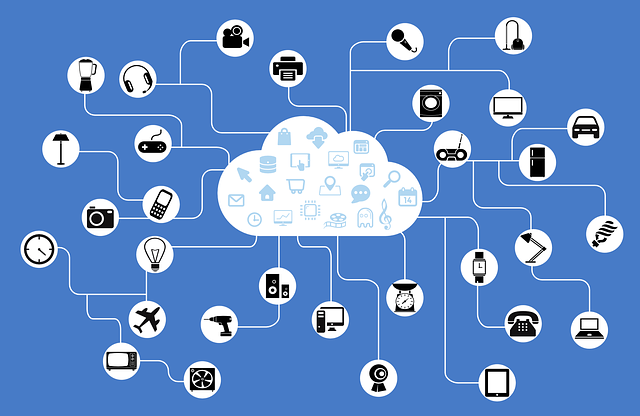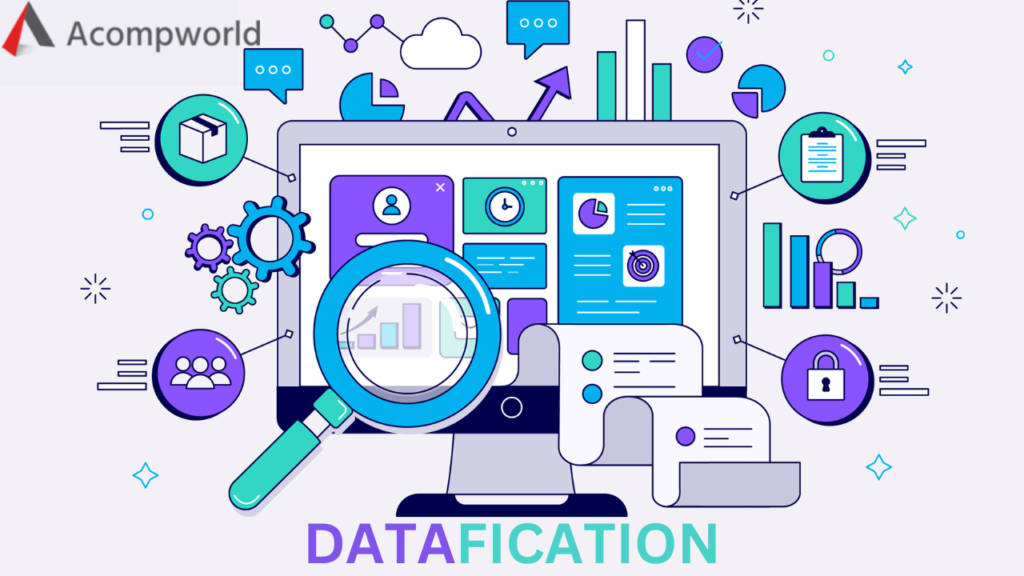Datafication is the process of transforming various aspects of life into data. This data is then used for analysis and decision-making.
The world is increasingly driven by data. Datafication, the transformation of everyday activities into data, significantly impacts businesses and daily life. Companies collect and analyze data to improve products, services, and customer experiences. From social media interactions to smart home devices, datafication encompasses diverse sources.
This trend offers valuable insights, enabling better decision-making and innovation. It also raises concerns about privacy and data security. Understanding datafication helps businesses stay competitive in a data-driven economy. Embracing this shift can lead to improved efficiency and new opportunities. The future of datafication holds immense potential for growth and transformation across various sectors.

Credit: www.airswift.com
Introduction To Datafication
Datafication is the process of transforming various aspects of life into data. It involves converting real-world activities into digital information. This transformation helps in understanding patterns and trends.
What Is Datafication?
Datafication is about converting information into data. Think of social media posts, online purchases, or even health metrics. All these activities generate data. This data is then analyzed for useful insights.
Importance In Modern Business
In today’s world, businesses rely on data. Datafication helps companies make informed decisions. It allows for better customer understanding and improves efficiency.
Here are some key benefits:
- Enhanced Customer Insights: Understand customer behavior and preferences.
- Improved Decision-Making: Make data-driven decisions.
- Operational Efficiency: Streamline processes and reduce costs.
- Competitive Advantage: Stay ahead of competitors with valuable insights.
Businesses use various tools and technologies for datafication. These include:
| Tool/Technology | Purpose |
|---|---|
| Big Data Analytics | Analyze large datasets for insights. |
| Machine Learning | Predict outcomes based on data patterns. |
| Data Warehousing | Store and manage large volumes of data. |
| Business Intelligence | Provide actionable insights for decision-making. |
Companies can leverage these tools to gain deeper insights. This leads to better strategies and more successful outcomes.
Data Collection Methods
Understanding data collection methods is vital for businesses. It helps them gather valuable insights. These methods can come from various sources and use different techniques.
Sources Of Data
Data can be collected from numerous sources. Here are some common ones:
- Surveys: Asking questions to gather information directly from people.
- Web Analytics: Tracking user behavior on websites.
- Social Media: Collecting data from platforms like Facebook and Twitter.
- Transactions: Recording purchase details and customer interactions.
- Sensors: Using devices to collect environmental data.
Techniques For Data Gathering
Various techniques help in gathering data efficiently. Some popular methods include:
- Interviews: Conducting one-on-one or group interviews to get detailed insights.
- Questionnaires: Distributing forms with structured questions.
- Observation: Watching and recording behaviors and events.
- Data Mining: Extracting useful information from large datasets.
- Web Scraping: Extracting data from websites using automated tools.
| Technique | Description |
|---|---|
| Interviews | Detailed insights from personal or group discussions. |
| Questionnaires | Structured questions to gather specific data. |
| Observation | Watching and recording real-world activities. |
| Data Mining | Extracting patterns from large datasets. |
| Web Scraping | Using tools to collect data from web pages. |
Processing Raw Data
Processing raw data is a crucial step in the datafication process. Raw data often comes in various formats and from different sources. This makes it challenging to use directly. To make sense of this data, it needs to be cleaned, organized, and integrated.
Cleaning And Organizing Data
Cleaning data involves removing or correcting errors. This step is vital for accurate analysis. Errors can come in different forms:
- Missing values
- Duplicate entries
- Inconsistent formats
After cleaning, the data should be organized. This means arranging it in a structured manner. A common way to do this is using tables. Here is an example:
| ID | Name | Age | City |
|---|---|---|---|
| 1 | Alice | 30 | New York |
| 2 | Bob | 25 | Los Angeles |
| 3 | Charlie | 35 | Chicago |
Data Integration Tools
Data integration involves combining data from different sources. This step is important for a holistic view. Various tools can help with this:
- Apache Kafka: Ideal for real-time data integration.
- Talend: Suitable for batch data integration.
- Informatica: Good for complex data integration tasks.
These tools make the integration process smoother and more efficient.
Using these tools helps in creating a unified dataset. This unified dataset is crucial for meaningful analysis.

Credit: www.promptcloud.com
Analyzing Data For Insights
Analyzing Data for Insights is a critical step in the datafication process. It involves examining data sets to uncover meaningful patterns and trends. This analysis helps businesses make informed decisions and predict future outcomes. Below, we explore two key methods: Statistical Analysis and Predictive Analytics.
Statistical Analysis
Statistical analysis involves applying statistical methods to data. These methods help identify relationships and trends. It includes techniques like mean, median, and mode.
- Mean: The average value of a data set.
- Median: The middle value in a data set.
- Mode: The most frequent value in a data set.
Visualization is also crucial. Charts, graphs, and tables make data easier to understand.
Predictive Analytics
Predictive analytics uses historical data to predict future events. It applies machine learning algorithms to data sets.
Here are key components:
- Data Collection: Gathering relevant historical data.
- Model Building: Creating models using machine learning.
- Testing: Validating the model with current data.
Predictive analytics helps in various fields. For example, it can predict customer behavior in marketing.
| Method | Description | Example |
|---|---|---|
| Statistical Analysis | Analyzing data using statistical methods | Finding average sales per month |
| Predictive Analytics | Predicting future events using historical data | Forecasting next month’s sales |
Visualization Techniques
Visualization techniques turn complex data into easy-to-understand visuals. This helps in making informed decisions quickly. Let’s explore some popular methods.
Graphs And Charts
Graphs and charts simplify data representation. They show trends and patterns at a glance.
Common types include:
- Bar Charts: Compare different categories using bars.
- Line Graphs: Display data changes over time.
- Pie Charts: Show proportions in a whole.
| Type | Best Use |
|---|---|
| Bar Charts | Comparing categories |
| Line Graphs | Showing trends over time |
| Pie Charts | Displaying proportions |
Dashboards And Reports
Dashboards and reports provide a comprehensive view of data. They combine various visualization techniques.
Dashboards: Offer real-time data insights. They include multiple widgets and charts.
Reports: Summarize data over a period. They are often used for in-depth analysis.
Key features of effective dashboards:
- Interactive elements for detailed views
- Real-time data updates
- Customizable layouts
Strategic Decision Making
Strategic decision making involves using data to guide business choices. This process ensures that decisions are grounded in facts and insights. Datafication plays a crucial role here, transforming raw data into valuable information. Businesses can then create well-informed strategies to drive growth.
Informed Business Strategies
Datafication helps companies develop informed business strategies. By analyzing customer behavior and market trends, businesses can identify opportunities. This leads to better product development and marketing efforts.
Consider the following benefits:
- Understanding customer needs: Predict what customers want next.
- Market trends analysis: Stay ahead of competitors.
- Resource allocation: Allocate resources more efficiently.
Example:
| Data Type | Use Case |
|---|---|
| Customer Feedback | Improve product features |
| Sales Data | Identify top-selling products |
| Market Trends | Predict future demands |
Risk Management
Datafication is essential for effective risk management. Businesses can predict potential risks and prepare in advance. This proactive approach minimizes losses and ensures stability.
Key areas include:
- Financial risks: Monitor financial health with real-time data.
- Operational risks: Identify and address process inefficiencies.
- Market risks: Adapt to market changes quickly.
Example of risk management steps:
| Risk Type | Mitigation Strategy |
|---|---|
| Financial Risk | Regular financial audits |
| Operational Risk | Streamline workflows |
| Market Risk | Flexible business plans |
Challenges In Datafication
Datafication is the process of transforming various aspects of life into data. It offers many benefits but also presents significant challenges. Understanding these challenges is crucial for leveraging data effectively.
Data Privacy Concerns
Data privacy is a major issue in datafication. Organizations collect vast amounts of data. This data often includes personal information. Protecting this information is vital to maintain trust.
- Personal Data Security: Personal data must be kept secure. Breaches can lead to identity theft.
- Regulatory Compliance: Companies must comply with privacy laws. Non-compliance can result in heavy fines.
- User Consent: Users must consent to data collection. Lack of consent can create legal issues.
To handle these concerns, companies use encryption and anonymization. These methods help protect personal data from unauthorized access.
Handling Big Data
Big data refers to large, complex datasets. These datasets are difficult to process using traditional methods.
Storage Issues: Storing large amounts of data requires significant resources. Companies need robust storage solutions.
Processing Speed: Processing big data quickly is challenging. Slow processing can hinder decision-making.
Data Quality: Ensuring data quality is essential. Poor-quality data can lead to incorrect insights.
| Challenge | Solution |
|---|---|
| Storage Issues | Use scalable cloud storage solutions. |
| Processing Speed | Implement high-performance computing systems. |
| Data Quality | Regularly clean and update data. |
Using advanced technologies helps manage big data effectively. This includes tools like Hadoop and Spark for processing.

Credit: future-business.org
Future Of Datafication
The future of datafication holds immense potential. As we generate more data, the ways we use it evolve. This transformation impacts businesses, governments, and individuals. Understanding these changes is crucial for staying ahead.
Emerging Technologies
New technologies are shaping the future of datafication. These innovations make data more accessible and useful. Here are some key technologies to watch:
- Artificial Intelligence (AI) – AI analyzes vast amounts of data quickly. It finds patterns and provides insights.
- Internet of Things (IoT) – IoT connects devices, creating more data. This data helps improve efficiency and convenience.
- Blockchain – Blockchain ensures data security and transparency. It is crucial for sensitive information.
- Quantum Computing – Quantum computers process data faster than traditional ones. They solve complex problems that were previously impossible.
Trends To Watch
Several trends will influence the future of datafication. Staying aware of these trends can help you adapt and thrive:
- Data Privacy – Protecting personal data is becoming more important. Regulations like GDPR emphasize privacy.
- Real-Time Data Processing – Businesses need instant insights. Real-time data processing is becoming a necessity.
- Edge Computing – Edge computing processes data closer to the source. This reduces latency and increases speed.
- Data Democratization – More people have access to data tools. This empowers employees and improves decision-making.
These technologies and trends will shape the future. Embrace them to stay competitive and innovative in the ever-evolving world of data.
Frequently Asked Questions
What Is An Example Of Datafication?
An example of datafication is tracking fitness activities through wearable devices. These devices collect data on steps, heart rate, and sleep patterns.
What Is The Purpose Of Datafication?
The purpose of datafication is to convert various forms of information into data for analysis. This helps businesses make informed decisions, optimize operations, and enhance customer experiences. Datafication enables better insights, predictive analytics, and improved efficiencies.
What Is The Difference Between Digitization And Datafication?
Digitization converts analog information into digital format. Datafication transforms various aspects of life into quantifiable data for analysis.
What Are The Methods Of Datafication?
Datafication methods include social media analytics, IoT sensors, GPS tracking, digital transactions, and online behavior monitoring. These techniques convert various activities into data for analysis.
Conclusion
Datafication transforms raw data into valuable insights, driving innovation across industries. Embracing datafication empowers businesses to make informed decisions. It enhances efficiency and uncovers hidden opportunities. By leveraging data, organizations can stay competitive and agile. Understanding and utilizing datafication is essential for future success.
Stay ahead by integrating data-driven strategies today.

